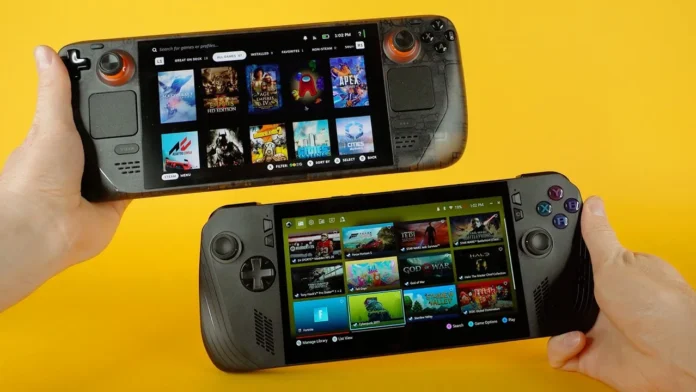Handheld gaming consoles, once considered relics of the past, are now reclaiming the spotlight. From the surge in mobile tech innovation to the nostalgic pull of classic games, gamers in 2025 are rediscovering the magic of portable gaming. This comeback is not only fueled by hardware advancements but also by a cultural shift towards flexible and immersive play experiences. As demand grows for on-the-go gaming that doesn’t compromise quality, developers and manufacturers are responding with devices that combine performance, design, and accessibility. Let’s explore why handhelds are trending again and what this means for the future of gaming. Their return signals a broader transition in how users consume digital entertainment in everyday life.
Technological Advancements Driving the Revival
Modern handheld consoles have significantly evolved, offering performance levels once reserved for desktops and full-sized consoles. With innovations in battery life, cooling systems, and high-resolution displays, handhelds can now run AAA titles seamlessly. Devices like the Steam Deck and ASUS ROG Ally have set new benchmarks for what portable gaming can achieve. These improvements allow gamers to engage with demanding titles without sacrificing quality or experience.
Alongside performance, customization tools have emerged as essential components of the modern gaming setup. Features like cross-platform syncing and advanced control calibration—such as those offered by a mouse sensitivity converter—help bridge the gap between handheld and traditional PC play, ensuring consistency in user experience. These technical solutions enhance portability without sacrificing player control. As more players rely on unified profiles and personalized setups, such features are now standard expectations in handheld devices.
The Role of Nostalgia and Retro Gaming
Nostalgia continues to play a key role in the renewed interest in handheld gaming. Devices that emulate classic consoles or re-release retro titles tap into emotional connections from the past. Nintendo, for instance, has embraced this trend with reboots of Game & Watch systems and the continued popularity of the Switch Lite. These devices offer both modern convenience and old-school charm.
Gamers are increasingly seeking simple, story-rich titles that recall the golden age of Game Boy and PSP. This retro wave is not only about replaying old favorites but also about experiencing the charm of pixel art, chip-tune soundtracks, and side-scrolling gameplay. Handheld consoles serve as the perfect medium for these styles. Additionally, retro-inspired design has become a selling point, drawing in younger players curious about the legacy of portable gaming.
Indie Games and Creative Freedom
The indie gaming scene has found a natural home on handheld devices. Compact, low-cost development tools allow creators to bring imaginative projects to life without requiring massive budgets. Platforms like the Nintendo Switch and Steam Deck have opened doors for indie developers, giving them direct access to audiences that prefer unique, offbeat experiences over mainstream releases. These platforms actively support and promote indie launches through curated digital storefronts.
Players appreciate the creative risks that indie developers often take, especially when those experiences are portable. Genres like roguelikes, puzzle adventures, and narrative-driven games thrive in this format. Handhelds offer the ideal ecosystem for experimentation, discovery, and storytelling. This synergy between innovation and accessibility continues to attract a growing community of creators and fans.
Flexibility and On-the-Go Lifestyle Integration
Another major factor behind the handheld resurgence is the shift in consumer lifestyle. With more people traveling, commuting, and balancing hybrid work schedules, there’s a growing demand for gaming that fits into limited free time. Handheld consoles provide quick access to high-quality entertainment, whether during lunch breaks or long train rides. They enable short, engaging sessions without the setup time required by traditional systems.
Unlike bulky setups, these devices are lightweight, convenient, and don’t require multiple peripherals. This level of portability fits well with younger gamers and busy adults alike, offering gaming freedom without the need for a dedicated gaming room or setup. For many, handheld consoles have become an integral part of daily routines, bridging gaps between work, travel, and leisure.
Market Response and Industry Investment
Gaming companies have recognized the resurging demand and are now doubling down on handheld innovation. Sony, once silent in the portable space after the PS Vita, is rumored to be working on a cloud-streaming handheld. Meanwhile, Valve and third-party manufacturers continue to push specs higher with each iteration. The competitive landscape is heating up, driving faster product cycles and improved performance benchmarks.
Accessory makers are also jumping in, producing portable monitors, travel cases, and cloud gaming accessories tailored for mobile users. Developers are optimizing game engines for mobile chips and touch interfaces. As the ecosystem grows, it validates handheld gaming not as a niche market, but as a core pillar of the gaming industry. Consumer confidence is rising, and publishers are dedicating larger budgets to handheld-specific releases.
Conclusion
The return of handheld consoles in 2025 is a reflection of both technological progress and shifting gamer expectations. Players are no longer confined to static setups or quick mobile games; they can now carry deep, high-fidelity gaming experiences in their backpacks. The revival of these devices combines innovation with sentiment, power with portability. Their comeback also redefines how we think about quality gaming experiences beyond the living room.
As developers, manufacturers, and gamers continue to embrace this evolution, handheld consoles are poised not just for a comeback but for a lasting legacy in the future of gaming. Looking forward, this trend signals a broader democratization of gaming, where access and immersion are no longer limited by space or equipment.
